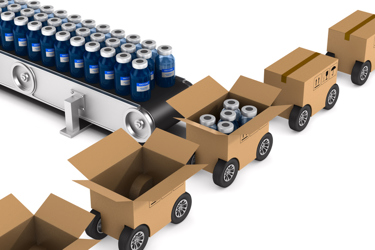New Year's Resolution: Teach Industry About COVID-19 Supply Chain Challenges

By Louis Garguilo, Chief Editor, Outsourced Pharma

Some questions:
- What exactly did eminently capable Pfizer run into with its raw materials supply challenges?
- How in fact does the “lab mistake” that befalls Sanofi and GSK occur?
- What exactly triggers “inconsistent dosing” during clinical trials for the AstraZeneca and University of Oxford vaccine?
- How is Moderna specifically navigating global cold chain logistics?
When vaccines have been administered in large volumes and COVID-19 is at bay, hopefully these respective organizations and others will take the time to provide detailed answers that:
- Teach the entire drug development and manufacturing industry how to better risk-assess to avoid future challenges.
- Inform us of outsourcing strategies and best practices, tech transfer processes, and the most effective supply-chain management techniques.
The imminent stakes for our biotech and pharma industry have rarely been so high as they were for COVID-19 vaccine development; they were met head on with a powerful response equal to the task.
Generally accepted development, clinical-trial and manufacturing timelines were hacksawed from decades down to months.
Accordingly, accolades have poured in. They should continue. This is what coordinated success looks like in the biopharma industry.
Soon, though, will come a time to learn not only from these overall successes, but also from the specific challenges along the way.
High Schooling
Pfizer, amongst its industry-leading success, had to backpedal on initial-dose delivery of its vaccine developed with Germany’s BioNTech – to 50 million doses from an initially publicized target of around 100 million doses.
An unnamed Pfizer spokesperson was quoted as saying the scale-up of the raw material supply chain took longer than expected. Further reporting indicates some early batches of raw materials failed to meet standards, resulting in production delays.
Of this we’d like details.
We hope for lessons learned, practices we might set in place to avoid similar challenges.
These pages are a proponent of making public detail external development and manufacturing sources, naming CDMOs and other suppliers, stating points of origin.
In fact, the COVID-19 vaccine-development process got off to a relatively positive start, from the perspective of informing the industry and general public of plans and processes.
In March – seemingly a lifetime ago – we published the editorial: Biopharma Answers Supply-Chain Questions Raised By COVID-19.
And specific to our present discussion of Pfizer’s success, a few months later (in May), there was this: Pfizer Shifts Outsourcing And Communication To Fight COVID-19.
From that March editorial:
“The coronavirus pandemic has tossed together your [biopharma industry] supply chains with a worldwide health and health-care challenge, national security concerns, and international and domestic politics.
“Questions of you have been elevated to a level of global consciousness.
Take this component of the coronavirus trauma as a positive. Use it as a strong catalyst to deeply reconsider geographic and other supply-chain risks; to enhance decisions for maintaining the most reliable source of drugs and vaccines for patients; to openly answer more questions.”
And from that second editorial:
“The shift is on.
“It’s positive, forward-looking, and a skillful use of outsourcing and manufacturing, particularly in the U.S.
Perhaps most remarkable: It’s all made public, presented in detail, and with a genuine feeling of shared openness.
“Mike McDermott, President of Global Supply, Pfizer, told Reuters the Big Pharma plans to shift more of its medicines manufacture to outside contractors in preparation for potential large-scale production of a vaccine to prevent COVID-19 ...
“Pfizer will call on its network of some 200 outside contractors. ‘They have been hugely helpful in the past and will help us through this,’ McDermott said of his CDMO partners ...
“McDermott also revealed Pfizer will add additional shifts to its own factories, hire more workers to take advantage of its unused production capacity, and stockpile current products in preparation for the move to COVID-19 vaccine production.
“Pfizer had already been readying four of its manufacturing sites - three in the U.S. and one in Belgium - to produce a potential COVID-19 vaccine. This is well ahead of clinical trial results demonstrating efficacy or prevention of infection on any of its four candidates.”
And this section was certainly prescient:
“Pfizer has also ruminated about potential supply chain challenges in front of it.
Speaking to Reuters, McDermott said producing vast quantities of vaccines requires Pfizer and BioNTech to rapidly work to scale up their suppliers’ ability to make raw materials for mRNA vaccines, adding that some of those suppliers are actually small biotechs.”
What transpired between then and now should be textbook learning for us all.
A New Year’s Resolution
Let’s end with another positive example of the openness that should continue to drive development and manufacturing outsourcing in the future.
In April, J&J indicated it and U.S.-based CDMO Catalent had contracted for large manufacturing capacity at Catalent facilities, which should be ready for vaccine production by January.
Has that now been achieved?
If not, let us know why. If so, what was key to making this large vaccine sponsor and service provider relationship work, both from a business and technical sense.
More such details should be disseminated as 2021 sets in.
Perhaps all the organization involved can enshrine this teaching objective as a New Year’s resolution of sorts. The kind that are kept.
What a year of learning 2020 was. Let’s keep it going. Great appreciation to every person around the globe working in the biopharma and outsourcing space.
